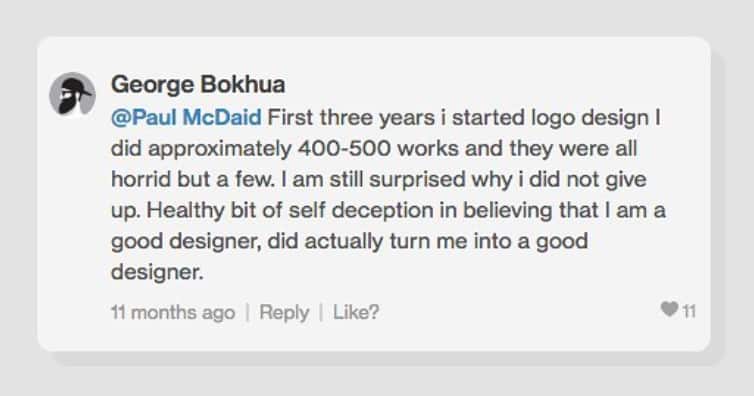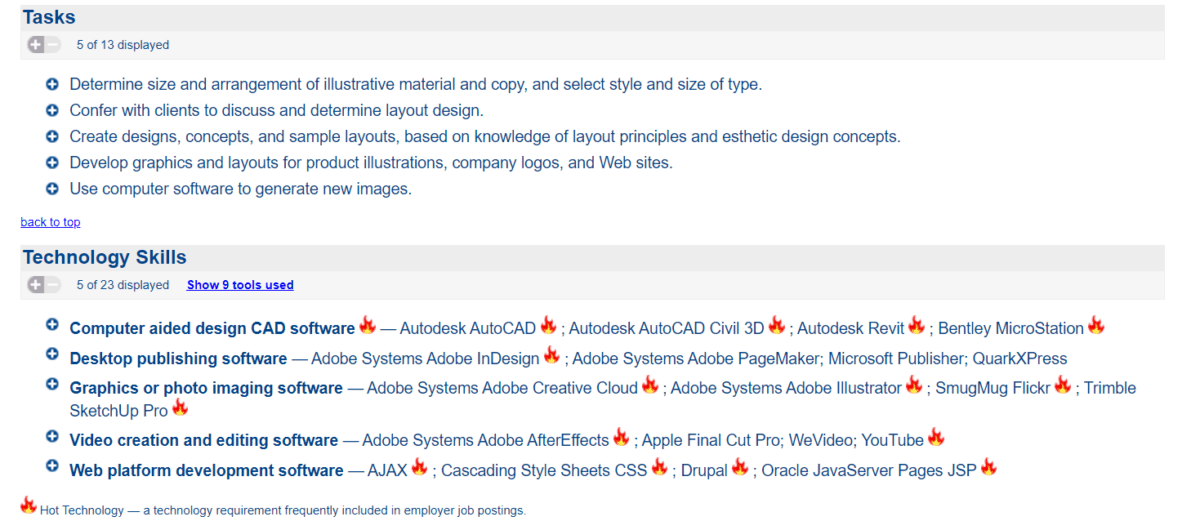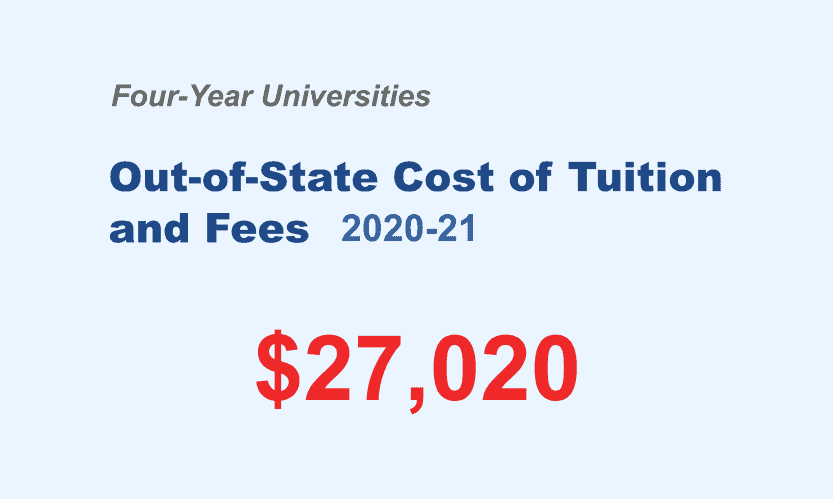How Hard Is Graphic Design
Graphic design is an excellent career path that is completely aligned with the careers and skills of the 21st century.
However:
With so many education options and advice on graphic design, it can be very difficult to grasp how to become a graphic designer.
Having taught graphic design in college for the past 10 years, I have identified the most important steps to become a graphic designer.
So:
How to become a graphic designer? To become a graphic designer, you need to follow a repetitive process that includes the following action steps:
- Study and understand graphic design principles
- Develop competent skills in pixel and vector graphics software
- Practice graphic formats, such as logos, business cards, flyers, and newsletters
- Develop a visual vocabulary by looking at other people's work
- Build a portfolio of your best work as you continue to progress in each step
Of course, there's more to becoming a graphic designer than these 5 steps.
In this complete guide, I will give you actionable answers that will put you on the right path to become a graphic designer.
Let's begin.
How to Become a Graphic Designer
Over the years, I have taught graphic design to hundreds of students with no experience, and some have successfully quick-started their design careers after only one semester.
Most leave the class having learned enough design principles and skills to feel confident about their next steps and keep on learning and growing.
This is exactly where you want to be.
BUT:
They all have followed a method in which they are studying design principles, practicing software skills, learning the specifics of graphic formats, and looking at other people's work progressively.
The following diagram illustrates what I mean:

As you can see, every level focuses on pretty much the same areas.
However, as you practice and put in the time, you move on to another level in which these same areas and actions become more challenging.
My point is this:
The main aspects of graphic design are all part of the process. You just have to practice, study and get better at them.
Let's look at the process in more detail:
1. Study and Understand Graphic Design Principles
To become an effective graphic designer, you need to understand the principles of graphic design. I cannot stress this enough.
As I tell my students, you can become an expert at clicking buttons in pixel and vector graphics software, but if you don't know how to apply the principles of design into your work, you will not produce professional results.
The better you get at applying graphic design principles to your work, the more you will progress at becoming a professional graphic designer (as opposed to an amateur one).
2. Develop Competent Skills in Pixel and Vector Graphics Software
Knowing design principles is only part of the graphic design equation.
In order to be successful, you need to actually be able to render visuals that will communicate a message in a compelling, pleasing way.
By using graphic design software effectively, you are able to manipulate visuals for communicating ideas and messages to an audience.
The only way to learn to use design software is by starting with basic projects and progressing to more difficult ones with consistency.
The more design problems you encounter, the more problems you can solve. The more you learn to solve problems, the more experience you gain.
Think about it:
What skills would you have after 1 hour of using graphics software? 25 hours? 1,000 hours?
The more time you put in, the more experience you will have earned. The more experience you have, the more effective and comfortable you will be as a graphic designer.
The good news is that you don't need to spend a single dime. There is AMAZING and FREE graphic design software available to you, such as Gimp and Inkscape.
So, start with a graphic design project right now.
3. Practice Graphic Formats
Now that you have started to learn design principles and use graphics software, you need to start learning the basic formats.
You know the ones:
Logos, icons, badges, flyers, business cards, etc.
My advice is that you begin mastering the logo first, because logo design teaches you a great deal about design principles.
Also:
Logos are encompassed in all other design applications. That is, you find logos within business cards, websites, and flyers.
A flyer or a newsletter is another excellent design application that will teach you much about layout.
So:
Start creating a logo for a family member or start to design a newsletter for your local community organization.
These real design projects will allow you to learn and gain experience.
4. Develop a Visual Vocabulary (Look at Other People's Work)
From the beginning, immerse yourself with the work of accomplished graphic designers and draw inspiration from them.
Ask yourself some questions:
- What are the characteristics of their work?
- What makes it beautiful or effective?
- How do they use design elements, such as lines, colors, and shapes?
The more you look at good examples of graphic design, the more you will understand the principles of design. In addition, you will start to develop your own style by understanding what you like.
You can start looking at other people's work on a site like Behance or start following graphic design accounts on Instagram.
5. Build a Portfolio of Your Best Work as You Progress
A graphic design portfolio is a selection of pieces that showcases your most refined work.
Now that you have a system in place for learning and practicing, you will naturally start producing work that, in time, will showcase your skills, style, and experience in graphic design.
Today, digital portfolios are an excellent way to show your work.
A Wix website, an Instagram account, or a Behance page can all be excellent ways to build a portfolio. These portfolio examples will give you a good idea of how a digital portfolio looks like.
Now, realize this:
We all sucked in the beginning!
This means that it will take time and effort to build a competent portfolio. However, you could start right now.
In fact, there will be multiple "versions" of your portfolio, which will improve over time.
Even George Bokhua, one of my favorite contemporary graphic designers, said this about his early work:

Becoming a Graphic Designer: FAQ
Now that you have a clear idea on how to become a graphic designer, let's look at some frequently asked questions about becoming one:
Is Graphic Design Hard?
This is a very reasonable question:
Is it hard to become a graphic designer? Becoming a graphic designer is not hard if you understand the basic knowledge and skills you need to master as a designer, have dependable and quality resources for study and reference, and develop consistency for practicing and improving from the very beginning.
However, IT WILL TAKE TIME. It's a fact you need to accept off the bat.
Let me explain:
You can't become anything without sweat, consistency, and persistence. Period.
At first, you will probably suck at graphic design. But if you stick with it, you will slowly but surely get better.
So, start right now.
The trick is to continue practicing, figuring out problems, studying, and learning to understand what makes up good design.
You need to be very persistent and patient.
I look at some of my fist logos and I am ashamed. They are absolute crap!
However, I got better with time, finally getting a firm sense of what's good design and what isn't.
Keep in mind that you will not suck for the entire time you are learning.
You will go through different levels and each level will bring you new projects, opportunities for revenue, challenges, and, most importantly, learning experiences.
Also:
Learning on your own doesn't mean that you're not getting "formal" education.
You will learn from books and great quality courses, and also from actual designers on the internet.
In sum:
You can learn to design in different ways, and it all boils down to the time spent on the actions that matter the most:
- Learning design principles and theory
- Practicing with graphics software
- Getting involved in as many design projects as possible (go do a postcard for your mom, a business card for your brother, a logo for a friend. etc.)
When I look back at my own process of becoming a graphic designer, I don't think it was hard. I just see that it took time.
What is the Graphic Design Profession?
Understanding what graphic design is will give you a good idea of how hard learning graphic design would be for you. This is the first step in knowing whether you can actually stick with it long enough to become a designer.
What is graphic design? The profession of graphic design is concerned with the strategic communication of concepts, ideas, and emotions through visual means.
In other words:
Graphic designers are visual communicators who create effective solutions for communicating to an audience through visual representations.
Sounds cool, right?
It is. But the task of graphic design entails much more than simply creating graphics on a computer.
Graphic designers are communicators and their skills go beyond the graphic aspect of the profession.
What Skills Do You Need to Become a Graphic Designer?
A graphic design career entails much more than just sitting in front of a screen drawing or retouching photos.
In fact, design is a very dynamic career in which you need to engage in different processes before you even start to design.
As visual communicators, graphic designers must be good at planning, strategizing, researching, and evaluating information.
In general, graphic designers must become proficient in the following skills:
Research
Designers must be good at evaluating and investigating ideas, brands, and organizations in order to produce visual products that are appropriate, unique, and effective at communicating intent (a logo, for example, entails a lot of research before even sketching a design).
Theory
Graphic designers must have a solid grounding in the theory and fundamentals of design. They are always learning and fully understand the principles that underlie both good design and communication.
Communication
Designers understand the fundamental principles of communication and how they apply to visual language. For example, they know how to appeal to people's emotions, how to apply the psychology of color, and about clear channels of communication.
Visual Elements
Designers understand what works visually and what does not.
They have developed a sense of beauty and functionality through experience, observation, and modeling their favorite designers.
Apart from these macro-skills, graphic designers at least must master the following visual skills:
- Color
- Layout
- Composition
- Typography
- Proportion
If you want a more extensive list of skills, check out the O*Net website (from the US Department of Labor), which compiles data from multiple graphic-design related job titles:

Is Graphic Design A Good Career?
As with any job in the creative economy, graphic design continues to be a career choice with good prospects.
Think about it:
Today, graphics and visual information are at the center of everything we do and consume. Just about any industry, from tech to education to health to advertising, relies on images to convey messages.
This is because graphic design is all about the communication of information in visual terms.
However, this means that a lot of people want to become graphic designers. In other words, there is competition in the field.
According to data from the US Bureau of Labor Statistics, the median annual salary for a graphic designer was $53,380 in 2020, with higher average salaries (above $63,000) in states such as Washington, Massachusetts, New York, and California:


And there's something else:
Related fields, such as web development, have higher average salaries (above $75,000 per year) and are growing at an above average rate.
This doesn't mean that you now have to become a programmer.
It means that, as you learn graphic design, you will benefit from learning skills that directly relate to graphic design for the web.
The more you combine graphic design with the field of web design, the better your chances at succeeding in the field.
Here's the good news:
You don't necessarily have to know code to design for the web, as there are many aspects of web design that don't require complex computer science skills.
Do You Need a Degree To Become a Graphic Designer?
You definitely can become a graphic designer without a degree.
Now, don't get me wrong:
School or university education can help you in achieving a career in graphic design. The thing is, I truly don't think it's required for your success.
Let's analyze this:
These are the pros of getting a graphic design college degree:
- It can give you a clear path as to what you need to learn and the skills you must master.
- It can provide you with expert guidance and assistance from a professional along the way.
- It could help you find a job or internship experience right out of school through special university programs.
But don't be fooled:
I've seen many recent graphic design graduates who are no better, or worse, than self-made designers.
In addition, school can be expensive, will take time, and results are not guaranteed.
To give you perspective, according to the report Trends in College Pricing 2020, by the College Board, average out-of-state tuition and fees at public four-year universities were $27,020 in 2020-21, a .9% increase from 2019-20.

On the other end of the spectrum, platforms such as Udemy, Skillshare, Domestika, and Creative Live, have an extensive list of graphic design courses, which range from a couple hundred dollars for a course to memberships of about $40 per month.
This means that a graphic design degree is an investment of time and money. But some investments are more risky, time consuming, and costly than others.
In sum:
A graphic design degree makes sense if you:
- Need pressure and external motivation to get things done.
- Have the economic resources to pursue it.
- Need external validation factors (such as grades) to keep improving.
- Need someone to tell you what to do to get organized.
- Need constant external pressure to accomplish tasks and assignments.
- Are in no hurry to become a graphic designer (you will have to take courses other than graphic design, go at the pace of the curriculum, etc.).
If you are diligent with a degree, you can actually end up with a great portfolio, which is, ultimately, the only variable that will land you a graphic design job, period.
But a self-made graphic designer could also accomplish a reasonable portfolio, probably before the four-years it takes to get an undergraduate degree, if the person is diligent and passionate about it.
In the end, it boils down to this:
The path you take depends on many factors, such as your motivation level, economic resources, time restrictions, and your eagerness to become a designer.
Can Anyone Become a Graphic Designer?
Now that you have some understanding of what graphic design is, you're probably asking the big question:
How do you know if you have what it takes to become a graphic designer?
Judging from my own learning journey and my experience teaching college-level graphic design, over and over I've seen certain characteristics that separate my most successful students from the least successful ones.
Answer the following "quiz:"
- Do you have at least a little bit of talent?
- Are you a creative person or do you feel the need to create something?
- Do you have a need to communicate something?
- Do you have a passion for art and design or enjoy other people's artwork or creations?
- Do you know what you like in terms of design (how things look, feel, or what they represent)?
If you can truly answer "yes" to at least 3 of the previous questions, you probably have the right aptitude to pursue graphic design.
But no so fast:
This in itself is no guarantee that you will succeed.
Ultimately, success will always be determined by your level of commitment in terms of studying design principles, practicing, and getting involved in actual design projects.
However, understanding whether you fit within this description at least will give you some idea if you would enjoy graphic design as a line of work.
Conclusion: It's All About The Timeline
Learning graphic design is not a sprint, it's a marathon. I am still on mine.
If this is what you want, your only regret will be that you didn't start any sooner.
So start right now: Get a book, download free software, and start on your very project.
And, of course, you can follow selfmadesigner.com!
How Hard Is Graphic Design
Source: https://www.selfmadedesigner.com/is-it-hard-to-become-a-graphic-designer/
Posted by: davingoetted84.blogspot.com

0 Response to "How Hard Is Graphic Design"
Post a Comment